Glass and Transparency
Transparency in architecture is more than just the physical properties of glass. It’s about creating visual and spatial links between inside and outside spaces. Technological advancements have revolutionized glass production and use in architecture. Modern glass facades and curtain walls define contemporary design, offering sleek appearances and expansive views. These elements blur the lines between interior and exterior spaces, while innovations in structural engineering and the use of laminated and tempered glass have improved safety and durability, allowing for larger installations. Large glass panels enhance natural light, reduce reliance on artificial lighting, and create a sense of spaciousness.
Innovative Uses in Our Projects
Feature Stairs
At Shape Architecture, glass is vital in creating light-filled, contemporary spaces. We’ve integrated glass into feature stairs, both externally and internally. For example, several Fulham basement extensions feature external glazed stairs in the rear light well. Paired with glass balustrades, these stairs reflect light and views, emphasizing transparency from the basement. Other projects feature internal stairs combining glass balustrades with timber or steel steps. Often leading to basement levels below rooflights, these designs foster a sense of lightness and transparency.
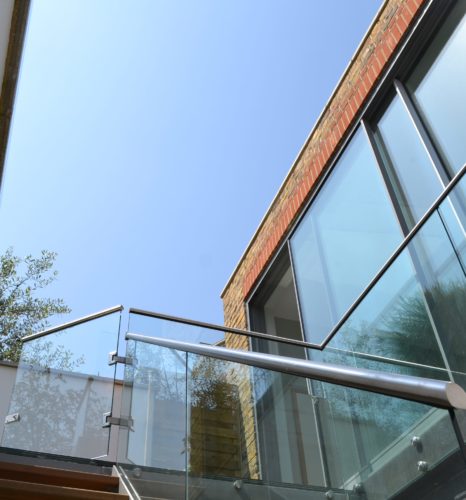
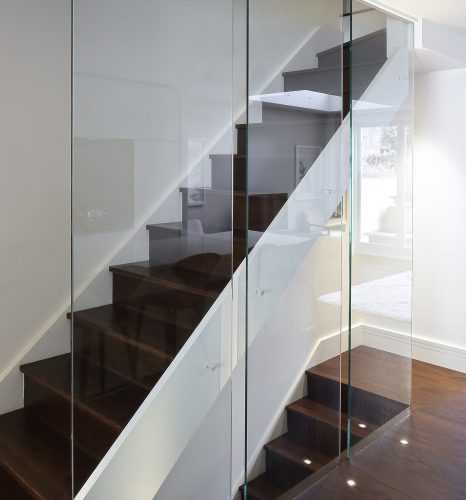
Glass Roof Lights
Roof lights come in various types and sizes, providing an effective way to bring daylight into interiors while offering views of the sky. Their sleek and simple design often contrasts beautifully with roof covering materials, especially when set within green sedum roofs or rubble roofs. An openable roof light, whether operated electronically or manually, further breaks down the barriers between inside and outside, and also provides a welcome method of natural ventilation.
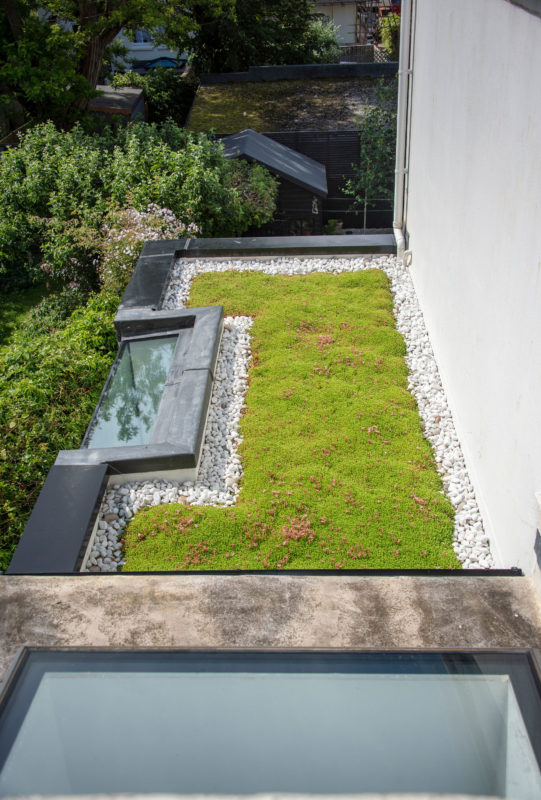
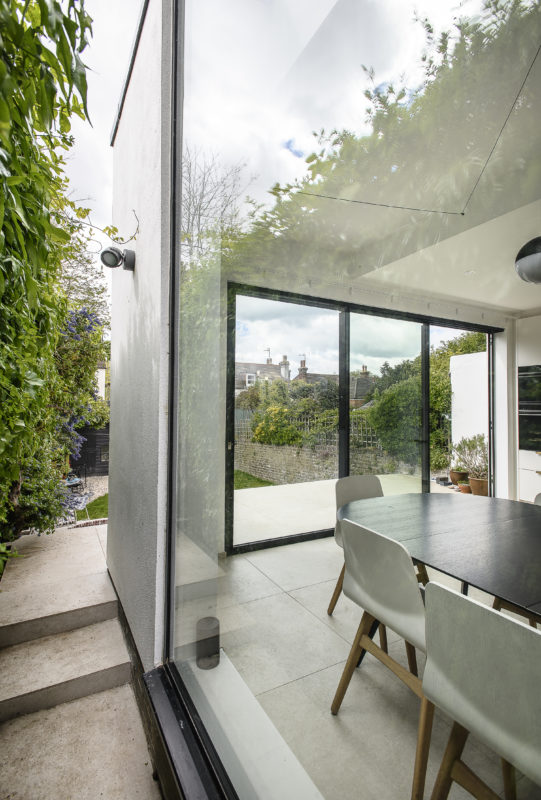
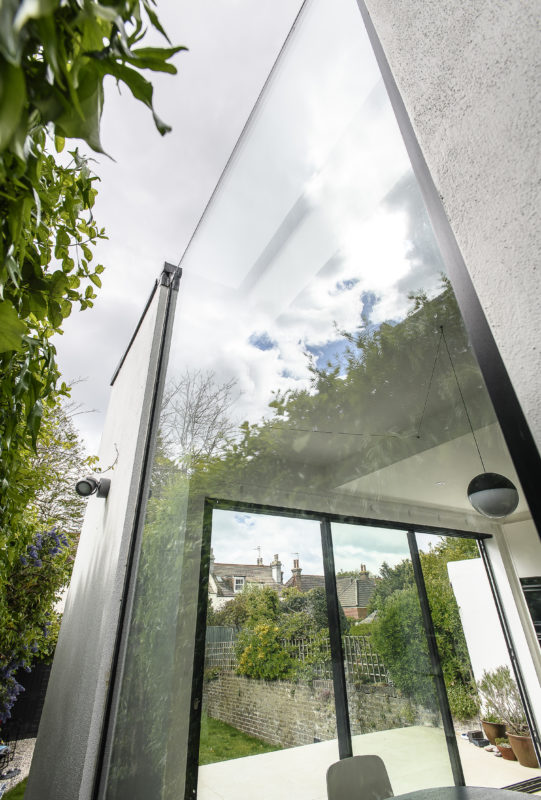
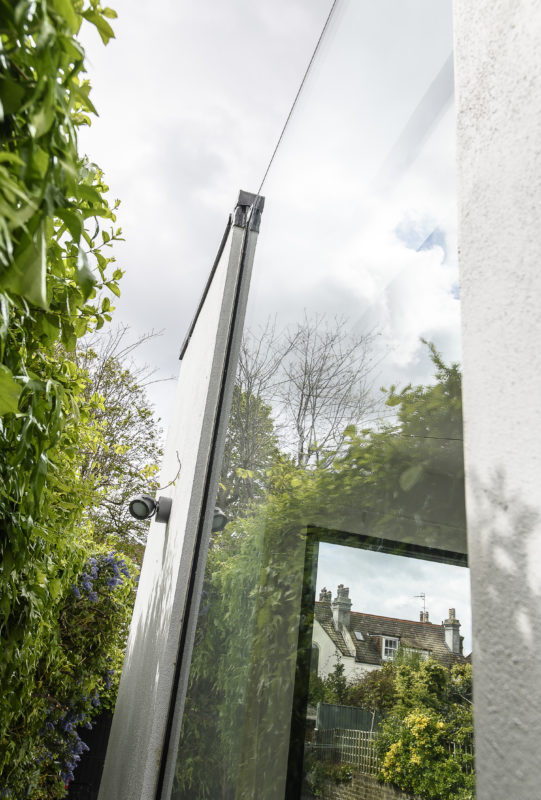
Glazed Panels
Fixed glazed panels within an interior space allow for the incorporation of substantial glass areas, providing views into other rooms and the exterior while reflecting natural daylight. They help reduce the feeling of enclosure between areas while still defining distinct spaces. Additionally, glass panels can be highly effective with strategically placed artificial lighting, such as floor lights that illuminate the panels from below.
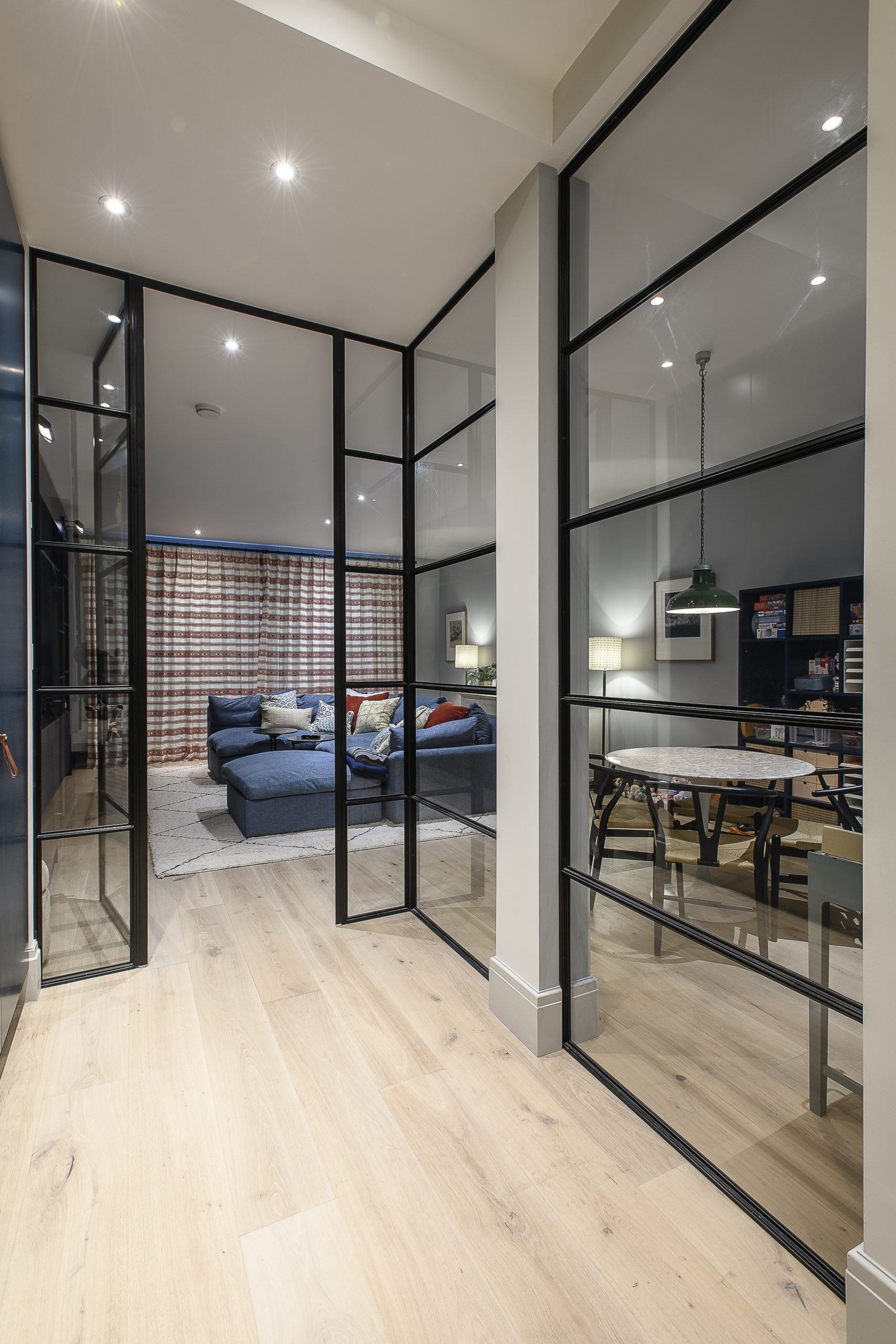
Glass in a Garden Setting
Glazed balustrading to light wells and steps up into a garden have proved very successful in many projects. They provide transparency, allowing views of the garden from inside, and reflect the surrounding planting, creating an elegant composition. Glass acts as an effective visual contrast to the shapes and colors of garden plants. In several London basement projects, a glass bridge joins the interior to the outside, enhancing light and creating a sense of transparency. The choice of glazed doors is also key in how a property opens to the garden. Options range from bi-fold, sliding, to central pivot doors, with slim-line or Crittall-type frames providing a visually lighter surround to the glass.
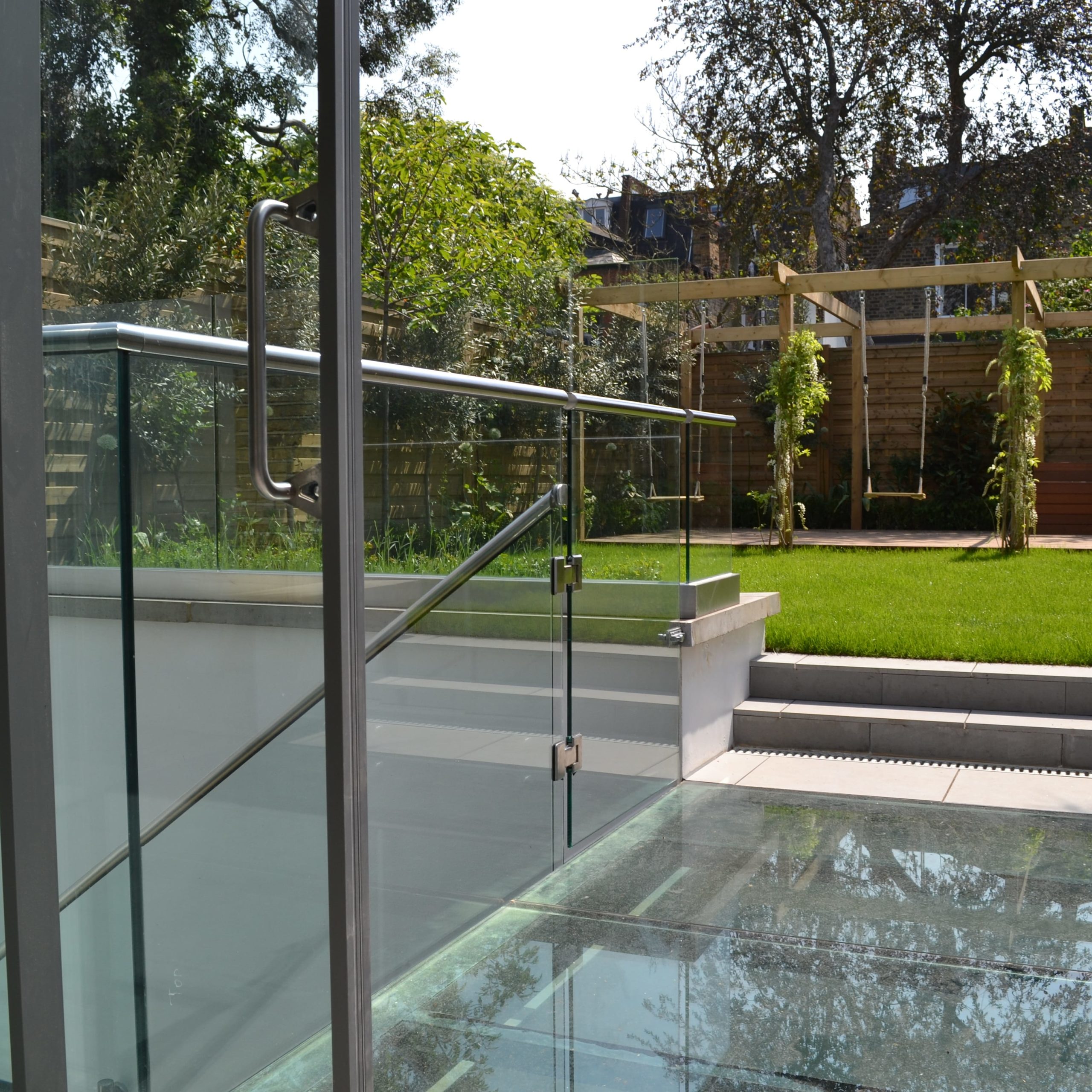
Sustainability and Energy Efficiency
In todays era of sustainability, energy-efficient glass coatings and double-glazed windows are essential. They reduce the need for heating and cooling, lowering energy consumption. Low-emissivity (low-e) coatings minimize heat transfer and glare, while photovoltaic glass, or solar glass, can generate electricity. Additionally, glass is recyclable, making it an environmentally responsible choice. Its longevity and resistance to degradation ensure it can be reused effectively.
Contact Shape Architecture
Should you wish to discuss your glazing project and understand the benefits of the use of glass in forming an elegant contemporary space, please feel free to contact us. We would be happy to chat with you.


